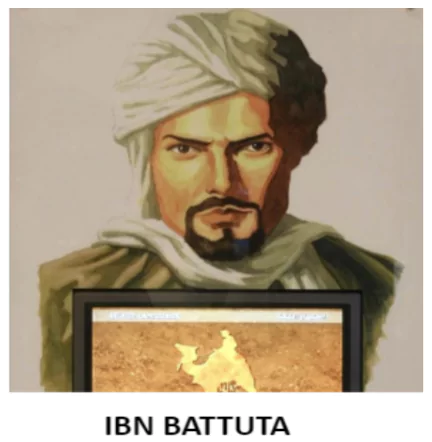![]() May 15, 2024
May 15, 2024
![]() 7453
7453
![]() 0
0
Ibn Battuta, born in Morocco, wrote the famous book “RIHLA” about his travels. He explored places like Syria, Persia, and even reached China. He worked for Sultan Muhammad bin Tughlaq in Delhi and journeyed across South Asia, sharing unique observations about the people and places he encountered.

The coconut and the paan: Ibn Battuta’s Description
|
| Must Read | |
| Current Affairs | Editorial Analysis |
| Upsc Notes | Upsc Blogs |
| NCERT Notes | Free Main Answer Writing |
In Ibn Battuta’s travels, he marveled at the diversity of cultures and the richness of trade in 14th-century South Asia. His detailed descriptions of cities like Delhi and Daulatabad provide valuable insights into the social, cultural, and economic life of the time. Despite challenges like slavery, his journey highlights the interconnectedness of the world even centuries ago.
| Related Articles | |
| Significance Of Foreign Travelers | Sufis And Medieval Mystic Saints |
| Economic Development: Challenges and Goals Explored | Sangam Age – Political History Of South India |
<div class="new-fform">
</div>
Latest Comments